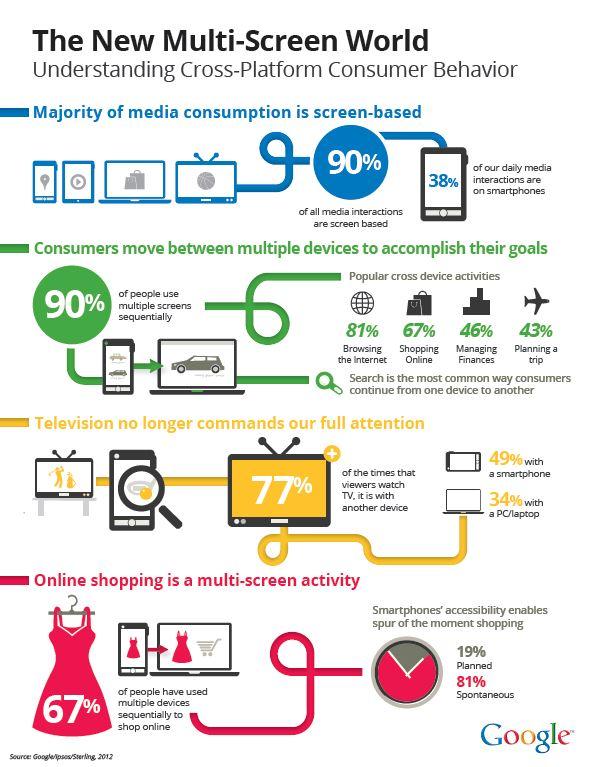Multi-Device Online Searches: How Consumers Research Products Before Purchasing
In today’s connected world, shopping isn’t just a one-device affair. Consumers seamlessly switch between phones, tablets, laptops, and even smart speakers while researching and purchasing products. Understanding this multi-device behavior is crucial for businesses looking to optimize their customer journey and increase conversion rates.
The Rise of Multi-Device Search Behavior
Research shows that modern consumers rarely rely on one device during their purchase journey. A report from Google revealed that 85% of online shoppers start a purchase on one device but finish it on another. This behavior is driven by convenience, device accessibility, and the consumer’s need to validate the purchase decision across multiple platforms further.
Multi-device usage allows consumers to:
– Start the journey on mobile: With 92.3% of internet users accessing the internet via mobile devices, the product search often starts here. Whether during commutes or breaks, mobile phones provide on-the-go convenience.
– Switch to desktops for in-depth research: Larger screens are handy for detailed comparisons or reading reviews. A Statista study found that 60% of shoppers switch to desktops or laptops when researching a product in detail, even after initiating the search on mobile.
– End on the most convenient device for purchasing: Interestingly, some users finalize purchases through different devices for various reasons. They may feel more secure completing transactions on desktops or prefer the simplicity of mobile apps designed for a seamless checkout experience.
The Impact of Cross-Device Marketing
Understanding how consumers switch between devices gives brands valuable insights into optimizing their marketing strategies. Effective cross-device marketing includes personalized and seamless experiences across every platform. This continuity is vital—51% of customers expect companies to know their purchase history across devices, according to Salesforce’s “State of the Connected Customer” report.
Businesses that create seamless cross-device transitions see increased engagement and higher conversion rates. For example, Google’s research found that companies that adopt a multi-device strategy can see up to 16% more conversions. This demonstrates the importance of tailoring user experiences across devices—by syncing shopping carts, remembering customer preferences, or personalizing recommendations based on previous searches.
Mobile Is Leading, But Not Dominating
Mobile devices undeniably play a significant role in online shopping, with over half of online purchases happening on mobile devices in 2023. However, multi-device behavior reveals that mobile is part of a broader journey rather than the dominant factor in all cases. Consumers still rely on desktop computers for specific stages of their purchasing process, especially when seeking detailed information or making higher-value purchases.
For instance, a study from Adobe found that while mobile traffic often surpasses desktop traffic for many websites, desktops still account for 56% of all eCommerce revenue. Larger screen sizes, more comprehensive site layouts, and perceived security benefits contribute to desktops retaining their role in finalizing larger or more complex transactions.
Voice Search: The Next Frontier
In addition to traditional devices, smart speakers and voice search technologies are playing a more significant role in the shopping journey. According to a report by eMarketer, 41% of smart speaker users have used voice commands to search for products. While voice search still often leads to purchases being completed on other devices, it represents a growing element of multi-device search behavior.
Brands must ensure their content is optimized for voice search to cater to consumers who use devices like Amazon Echo or Google Home as the starting point for product discovery.
Adapting Your Business to Multi-Device Shopping
To keep up with multi-device behavior, businesses must focus on creating a unified, device-agnostic shopping experience. Here are a few strategies for companies to consider:
1. Ensure mobile optimization: With so many searches starting on mobile, having a mobile-optimized website is non-negotiable. Speed, user-friendly interfaces, and simple navigation can make a huge difference in retaining users across the journey.
2. Syncing across platforms: Features like cross-device shopping carts, synced wish lists, and shared browsing history help provide continuity regardless of the user’s device.
3. Personalize the journey: Use data-driven insights to tailor recommendations based on browsing and purchase history, allowing for a consistent shopping experience across all devices.
4. Invest in omnichannel marketing: Seamlessly integrating your brand’s marketing message across email, apps, social media, and web browsers can help guide consumers through the entire shopping funnel, no matter which device they’re on.
Conclusion
The future of online shopping is increasingly cross-device, as consumers blend the use of mobiles, desktops, and other connected devices while researching and purchasing products. For businesses, the key is to provide a unified, personalized, and seamless experience across all platforms. Companies can stay competitive in an evolving digital landscape by understanding how people use multiple devices and leveraging this behavior to improve their customer journey.
Sources
– Google. “How People Shop: A Look at Modern Shopping Behavior.” 2022.
– Statista. “Device Usage in E-Commerce.” 2023.
– Salesforce. “State of the Connected Customer.” 2022.
– Adobe. “Mobile Shopping Trends: The Role of Smartphones in E-Commerce.” 2023.
– eMarketer. “Voice Search Trends.” 2023.
Our habits are changing all the time. The multi-device online searches are really common activity. We use many electronic devices that are connected to Internet at home, at work. As a consequence search engines started monitor our online searches and our behaviour.
According Google – the tablets and smartphones changed the web searching experience:
77% of mobile searches are in a location (home or work) where people are likely to have a
PC available to them.
Source: Mobile Search Moments Study
March 2013
90% of multiple device owners switch between screens to complete tasks.
Source: The New Multi-Screen World
August 2012
According Google data our multi-device online searches have changed our habits importantly, especially in e-commerce area.
Please look at the infographic below:

PDF version – multi-screen-world-infographic_infographics
I saw also other researches that presented a purchase process by using different devices.
Simply the outcome of multi-device purchasing was following:
- if a customer see the same product offer on many devices correctly, she/he will be more willing to buy. This pre-purchasing activity will help in taking decision. 67% of Internet users are buying by using many devices in the same time.
- if a customer sees too many products at your offer on PC, you can differentiate this offer by mobile device – less products on tablets, lesser products on smartphone website.
- you can combine multichannel sales to present better offer.
- usability of websites on different devices is a key factor of success
- the great content, great offer – it is another surplus!


 Digideo
Digideo
 Digideo
Digideo Digideo
Digideo Digideo
Digideo
 Digideo
Digideo Digideo
Digideo
Share this entry